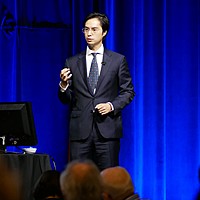Investing like Howard Marks during the GFC
Great investors have an uncanny ability to find attractive investment opportunities in any market. During the depths of the GFC when fear of the unknown paralysed most investors, Howard Marks, co-founder of Oaktree Capital Management, invested an average of USD $625 million per week during 2008-2009. A shrewd (and profitable) decision in retrospect, it was far from an easy decision at the time. Headlines from the Wall Street Journal read ‘Worst Crisis Since ‘30’s, With No End Yet in Sight’. Yet through those dark days, investors that found opportunity in that moment have been rewarded in multiples.
The climate today is one of uncertainty and hesitation. Market commentators have been referring to the current cycle as ‘it’s currently three quarter time’, implying we are 75% through the market cycle, with one quarter remaining before an impending downturn awaits. I don’t ascribe to this view. The issues with this mindset are two-fold. First, investing is not a football game - there is no guarantee of four precise quarters. Second, profitable companies exist in all market cycles, even in recessions. In fact, exceptional companies expand market share from competitors during downturns. Adversity is the friend of great companies but the enemy of the mediocre. In investing, many players can continue kicking goals even after the final siren.
The opportunity to invest like the 2008 Howard Marks exists today. As Mario Gabelli (founder of GAMCO Investors) says ‘If you don’t look, you won’t find’. So how does one find the hidden opportunities that others are blind to?
As Mario Gabelli (founder of GAMCO Investors) says ‘If you don’t look, you won’t find’.
Trade wars, Brexits, slowdowns and other red herrings
To find the diamond in the rough, you must first be open to looking for them. It is a great temptation to many investors to abandon the search for opportunity when faced with today’s latest headlines. But the more investors that abandon the search, the greater the reward for those that continue. The only relevance that headlines might have, is their effect on pricing, not on the value of the opportunity itself.
I’ll illustrate what I mean by way of example. We’re an investor in an advanced manufacturer domiciled in Hong Kong with a market capitalisation of USD $500m. On the face of it, an advanced manufacturer with plants in China and customers in the US doesn’t have a bright outlook. The ongoing US-China trade war would be a concern to most investors. However for opportunistic investors, the hidden opportunities present themselves when you look beyond the macroeconomic red herrings and delve deeper into actual business-related facts. After all, we are investing in companies, not economies.
This lesson was reinforced for me when I spoke to to the CFO of the company. It turns out the newly-imposed 25% tariff only applied to 7% of total revenues. Actual business impact was minimal. In addition, he told me one of their largest customers, Google, had instructed them to ship their finished products to Taiwan instead of the US. By doing this, Google would be able to bypass the impact of the tariff. Importantly, it is easier for Google to change the delivery supplier than to change the manufacturing supplier.
So what does this example highlight? We invest in businesses. Not economies. Therefore investment decisions should be based on business-related facts, not high-level economic facts. You won’t find the hidden opportunities if you’re distracted by the red herrings. For most investors who choose to wait until the macroeconomic dust settles, the hidden opportunities won’t exist anymore.
But don’t complain the next time you hear someone provide a macroeconomic reason to justify their decisions. It is their approach that provides us with the mispricing and the very existence of that limited edition piece that no one even knew about.
Mining for gems
Silent opportunities can often be found in the detail that others overlook or don’t take the time to see. This was one of the free kicks our fund benefited from when we invested in a Belgium-based weaving loom manufacturer with a market capitalisation of EUR $1.5 billion. On a standalone basis, I was already more than satisfied with the success of the weaving loom business. Tick. The company is led by a motivated and intelligent entrepreneur. Second tick. This company also owns 38% of a EUR $1.5 billion chemicals company. On my continued mining, I discovered that this 38% holding was recorded at book value. This is a crucial detail. It means that the assets of the weaving loom manufacturer reflect the price it paid when it acquired the chemicals company years ago, not the current market value. It is akin to buying a house, then discovering upon moving in there is treasure hidden in the backyard. Triple tick. Following further investigations, I was pleased that the hidden treasure was real and it was undervalued by the vendor. A bonus sweetener for an already quality house.
But don’t complain the next time you hear someone provide a macroeconomic reason to justify their decisions. It is their approach that provides us with the mispricing and the very existence of that limited edition piece that no one even knew about.
Closing remarks
Rare stones exist everywhere. In order to find them, investors must ignore the red herrings and remain open minded even when situations seem most dire. Opportunities are most plentiful during uncertain markets but if you wait until the dust settles, everyone is looking at the same thing with 20/20 vision.
Adversity is the friend of quality companies and an enemy of the mediocre. The experiences I’ve seen demonstrate why it pays to keep searching for facts that relate to the company, not the economy. The more you focus and seek out opportunities, the greater the odds stack in your favour.
Happy compounding.
3 topics

